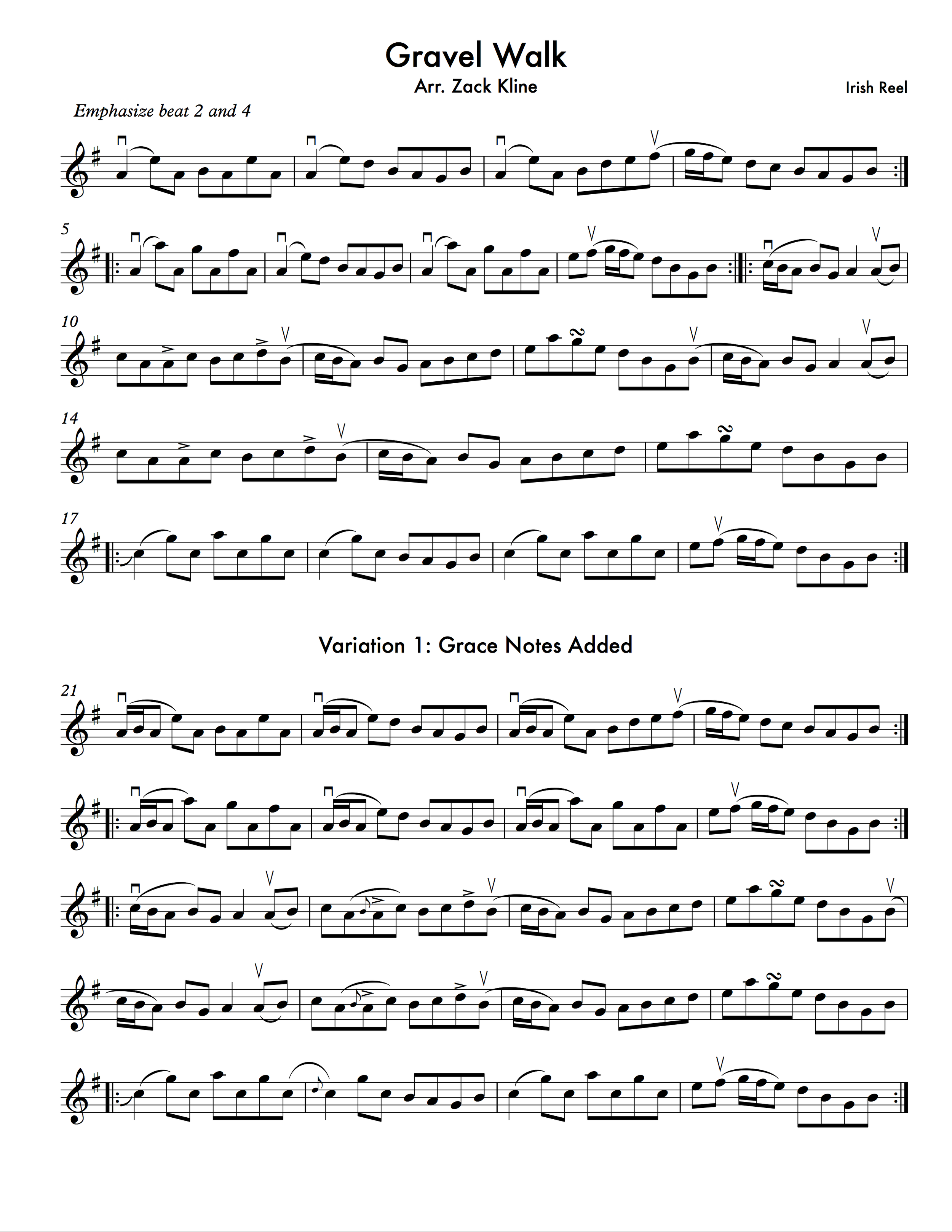Gravel Walk
When I play this tune, I feel like I am back in college, playing it for Ceili dancers in the cafeteria, along with 10 or 15 other student musicians. The folk music club Flying Fingers is sadly no longer a thing at Macalester, but in its heyday we could get 1 credit per semester playing various kinds of folk music in small self-directed groups. In fact, that was part of the reason I ended up at Mac. I knew I would be able to play a variety of music as part of the curriculum!
Ok, let’s get out of the memory zone and talk about this tune. It is a well-known session tune and one thing I especially love about it is the last section moving to major (whereas every other section is minor). Often there are one or two great features to these well known tunes that really make them cool, I think and change to major is part of the charm here. I also like the “jumpy” melody of the second section.
I realized when dusting off this tune that some of the melody is quite similar to Jenny’s Chickens —especially sections 2 and 3– except that Jenny’s is usually in B minor. Gravel Walk appears in a few different keys on recordings I found, but I like it in A minor myself. I’ve put down here what I learned as the basic tune.
Notes on Playing the Tune
This piece will help you practice slurring across strings. For a good dance feel, try to get louder the second beat (which is the second note of the slur). You’ll have to save bow by starting the slur fairly slow so you have enough bow to speed up on the second note. So, you need a feeling of holding back your arm, then accelerating, all in the space of a beat and a half! This can be practiced in your scales first, to help it become automatic, before trying it in the piece. This same type of swell sounds good on the slurs that don’t cross strings as well. A simple way to conceptualize the swells might be like this: whenever slurring onto a new beat, that beat can be emphasized a bit through swelling. If you want to show the dancers where to step, you’ll want to show a give of where the beats fall.
When attempting the 1st variation, there are some things to keep in mind about the fast ornaments. The most important thing is to keep your left hand relaxed, which can be hard when you know you have to get a fast note to happen. The timing is key, so be sure you are playing the two 16ths evenly and holding the 8th after them for long enough. To practice this, you might use separate bows at first, so you really hone in on the rhythm. Another thing to think about is how the first finger comes down on the string. It should be fast but probably not as fast as possible (so, a jerking motion) and it should spring up as soon as it hits the string. This means it doesn’t have time to press the string down as fully as you would when playing a longer note. The spring up can be a relaxing motion, that is, it doesn’t require much effort to let your finger come back up. All these things— general tension in the left hand, trying to move too fast and jerky, and exaggerating the finger lift— are things that will actually end up slowing you down.
The 2nd variation swaps the fingered ornament for a very similar sound, but done with the bow. The key here is two things which are: 1) to keep a lot of weight on the string during the 16th notes and 2) use the tiniest bow length possible for those notes. Because we need a good amount of weight, it feels like there is some effort required here, but be careful that you don’t end up tensing your whole arm (as above, that will slow you down). Instead, try to get a feeling of sinking into the string and use your forearm to do the motion. In fact, as I type this, it occurs to me that whole-arm tension probably comes if you try to do these fast bows from the shoulder.
There are many names for the fast bowing. I asked around on some forums and got lots of different answers. Deedles was one of my favorites…surely that’s how you would sing it if you were singing the tune. You would sing deedley deedle deedle deedle, so maybe “deedleys” would be even better. Or, I think I might call them bowed cuts (a cut is the Irish name for the ornament on beat one throughout the first variation).
A few notes are different here, but the video below gives a nice sense of this tune.

